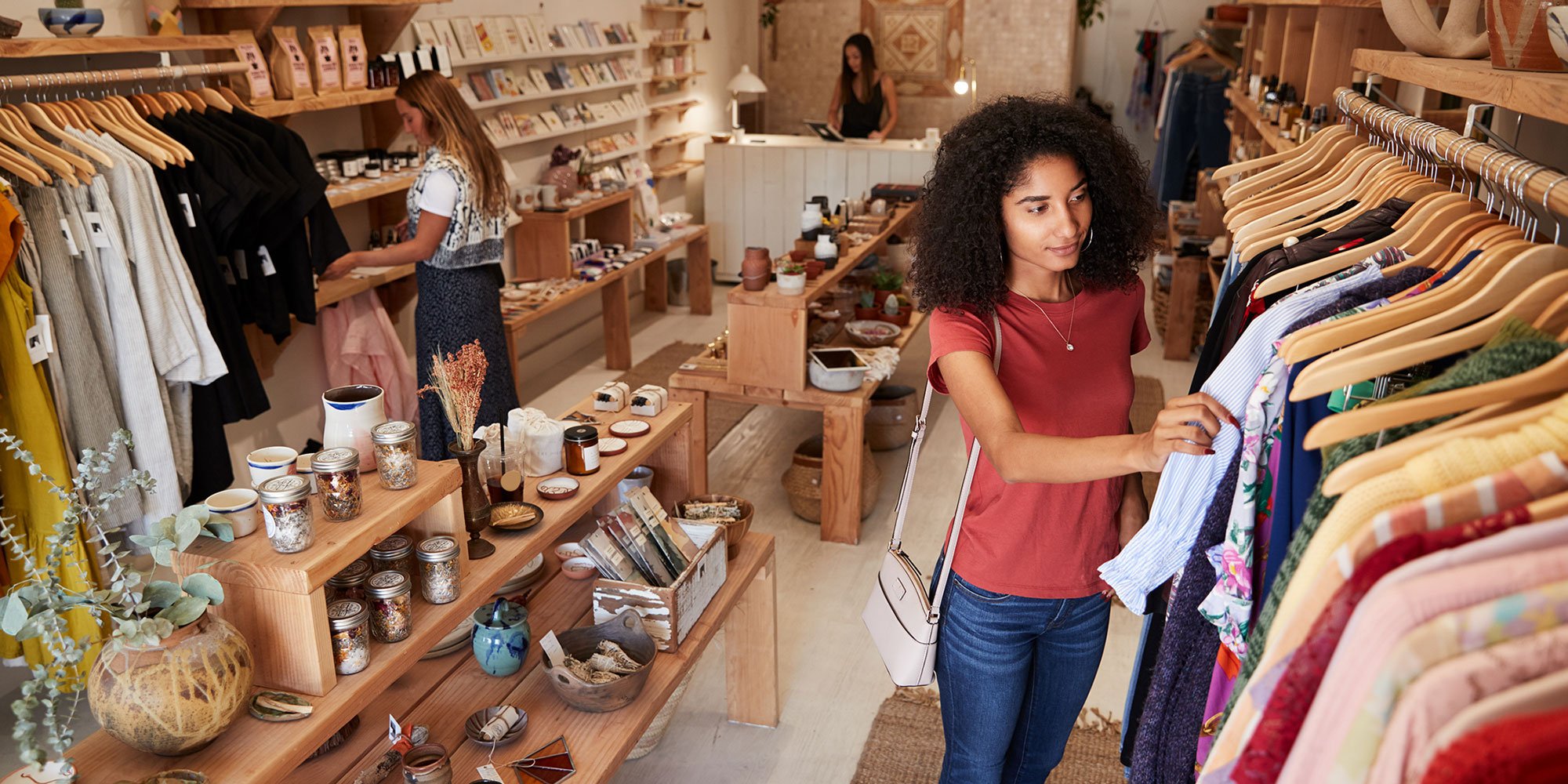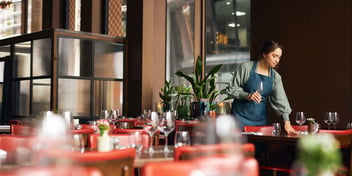
12 Retail Design Tips to Revamp Your Store Interior
A store’s design provides a first impression to customers when they walk in. If the design feels welcoming and conveys the right message, it increases the likelihood that a first-time visitor will turn into a paying customer—and that paying customers will return to make additional purchases.
Our mission at Select Funding is to provide affordable business financing that business owners can use to achieve their growth goals. Many of our retail clients use some of their financing to revamp their retail interior design to create a space that’s functional for employees and impressive to customers. Here are 12 retail design tips to revamp your store interior.
#1: Consider the Customer Experience
Before you make any decisions about revamping your store interior, you should take some time to consider the customer experience you want to provide. Even if you have in-demand, quality products, you need to give your customers a reason to return to your store.
The customer experience begins with the exterior of your store and its appearance and ends with a purchase. It’s your job to make sure that from the moment a customer approaches the entrance of your store, they feel what you want them to feel. Everything design element from the layout of your store to the colors you choose will impact the customer experience.
#2: Choose the Right Layout for Your Store
One of the most important choices you’ll make when designing your store interior is the layout. When done properly, a retail store layout can enhance the customer experience while maximizing profits for the store’s owner.
Your layout should take into account the shape and size of your retail space, how you want your customers to interact with your products, your branding, and other factors. There are several retail floor plans that you may want to consider:
- Grid layout. A grid layout is what you’ll find in most grocery stores and pharmacies. It consists of aisles where products are grouped by type. It’s not the most aesthetically pleasing layout but it is highly practical and popular for that reason.
- Straight store layout. This layout is designed to drive customers toward featured product displays at the back of a store and is most commonly used by convenience stores and liquor stores.
- Forced path store layout. This layout is designed to guide customers through the store using a path you create. It discourages backtracking. IKEA uses a forced path layout.
- Loop layout. A loop layout creates a rounded path for the customer that leads them past displays with the goal of getting them to the checkout. It’s most often used by department stores.
- Diagonal layout. This layout encourages the flow of customers from the store entrance to checkout. The downside is that it makes it difficult for customers to backtrack if they decide they want to buy something they’ve already passed.
- Angular layout. Many luxury boutiques use an angular layout to highlight their products and encourage customers to buy them.
You’ll need to keep your specific retail plans in mind when choosing a layout.
#3: Make Branding a Priority
Whatever layout you choose, it’s important to incorporate your company’s brand in your store interior. Branding includes obvious things such as signage and logos as well as more subtle reminders of your brand, including colors, fonts, and how you want your customers to feel.
If you haven’t created a memorable brand for your retail business, revamping a store interior is a good time to do it. Many retail interior designers have working relationships with graphic designers who can help you create a logo and choose brand colors.
#4: Incorporate Speed Bumps
One of the risks of having long, uninterrupted aisles of products is that customers may miss some of your offerings. If you choose a grid layout or a straight layout, you should consider creating spaces for them to pause.
When we talk about speed bumps in retail spaces, we’re not talking about literal bumps in the floor. Instead, use composed displays, full outfits, or interactive tools such as tablets to encourage customers to pause and interact fully with a product or brand before moving on. These pauses give customers a chance to catch their breath and may make it more likely that they’ll take their time when passing through each aisle.
#5: Use Lighting to Create Ambience
The lighting you choose for your store can make a big difference in whether customers choose to come in and how long they stay. Insufficient lighting may make your products appear lackluster or dull while overly bright lighting can be hard on the eyes.
There’s a reason that many high-end stores use recessed lighting to spotlight their displays. In addition to considering which lighting will work best for your store, clothing store owners should also prioritize flattering lighting in dressing rooms.
#6: Space Product Displays Appropriately
It’s essential for customers to be able to move around your retail store easily. Not only do you want them to feel comfortable, you also don’t want your displays to be at risk of being knocked over or damaged because a customer hit them with a shoulder (or shoulder bag).
Make sure that there’s enough space between displays to allow customers to move around and pass one another and minimize the “butt brush” effect, something that happens when customers may brush up against one another when sharing a small space. Narrow aisles or passageways can be frustrating to navigate and will have a negative impact on the customer experience.
#7: Don’t Overstock (or Understock) Your Store
When customers see shelves stocked with tons of products, they are more likely to think that the products will be affordable, whereas minimalistic displays convey a sense of luxury. An example would be a high-end shoe store that displays a single shoe in each style and requires customers to interact with a salesperson to get shoes in their size to try on.
You’ll need to consider your prices and how you want customers to perceive your store to decide how to set up your displays. If you choose a minimalistic style, you may need to dedicate additional space to storage to make sure you have customers’ sizes in stock.
#8: Make a Strong First Impression
One area where a lot of retail store owners make mistakes is in designing the threshold: the area of the store that customers see when they first come in. The temptation may be strong to put top-selling products in that area but that’s not necessarily the best design choice.
The threshold should incorporate the first five to 15 feet of space where customers enter your store. Your goal should be to use your branding to let customers know what to expect, giving them a moment to breathe and consider where to go next.
#9: Use Signs to Engage Customers
You know you need signs on the exterior of your retail store, but smaller signs inside the store can engage customers’ attention and help them find products.
There are some obvious choices for interior signage; for example, grocery stores typically have signs over every aisle to let customers know where to find products. But even luxury boutiques can make use of signs to indicate products for special occasions or gifts.
#10: Optimize the Checkout Experience
Getting customers to the checkout area is the goal of retail interior design and you want to make the checkout experience as positive as the shopping experience.
Some of the things you can do include leaving enough space for customers to wait for the next available cashier, creating impulse purchase displays to encourage last-minute buying, and using lighting to make the checkout process as enjoyable as possible.
#11: Coordinate Your Store Exterior with the Interior
While we’re focusing here on revamping your store interior, you should also think about how the exterior of your store, including your signage and window displays, coordinates with the interior.
Ultimately, you want any customer who sees your exterior to want to come inside—and then, you want them to make a seamless transition into shopping. Attractive window displays, beautiful designs, and exterior design that includes plants or fixtures can do a lot to make your retail space attractive.
#12: Work with an Experienced Retail Designer
Our final tip is to work with an experienced retail designer if you can afford to do so. Retail designers understand layouts, branding, lighting, signage, and the customer experience, so they can help you design an interior that will allow you to achieve your business goals.
Most retail designers charge a percentage of the budget as a design fee. For example, if you budget $25,000 to revamp your store interior, you should expect to pay between 10% and 15% of your budget to pay your designer, which translates to between $2,500 and $3,750.
Get Working Capital to Redesign Your Retail Space
Whether you’re moving into a new retail space or just looking to elevate the customer experience with a new design, the 12 retail design tips we’ve listed here will help you incorporate the features needed to increase your sales.
Do you need affordable financing to create a memorable retail experience for your customers? Select Funding is here to help! Learn more about our small business financing and apply today.






